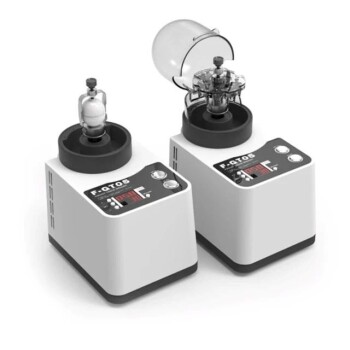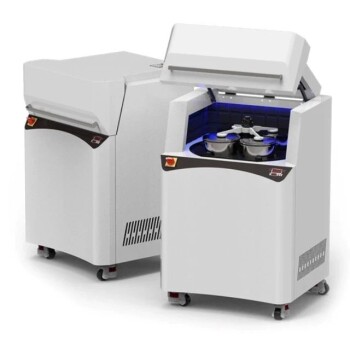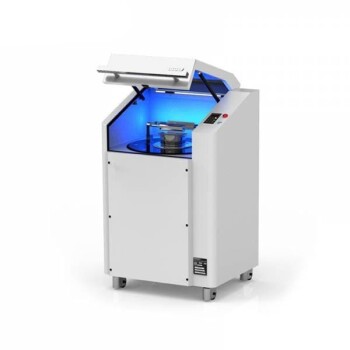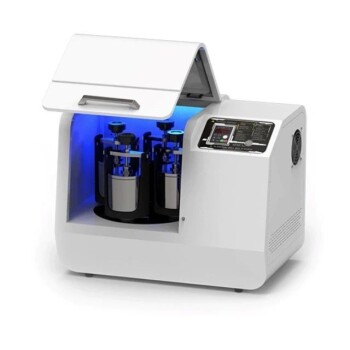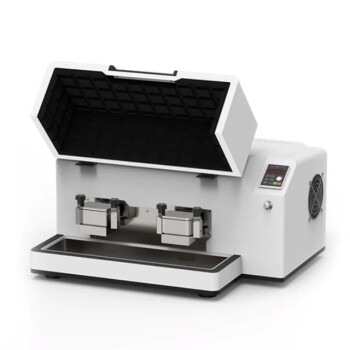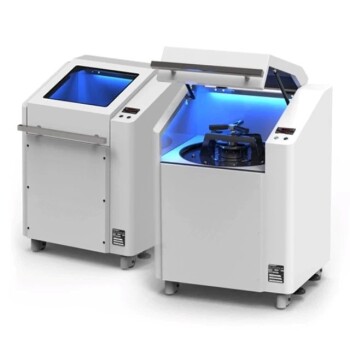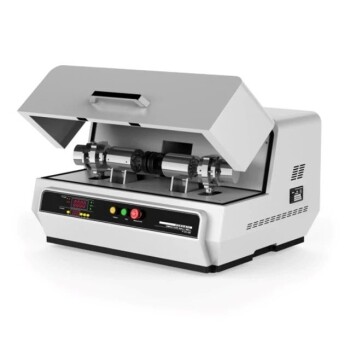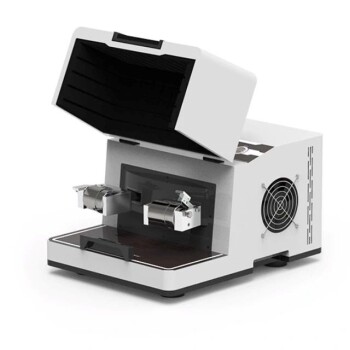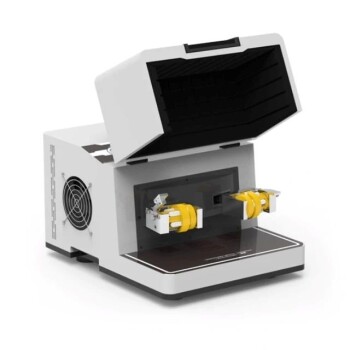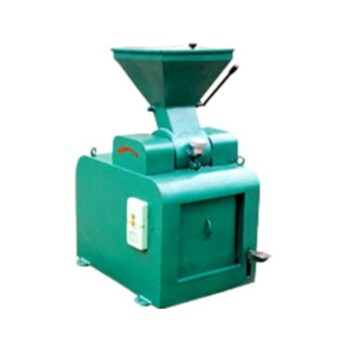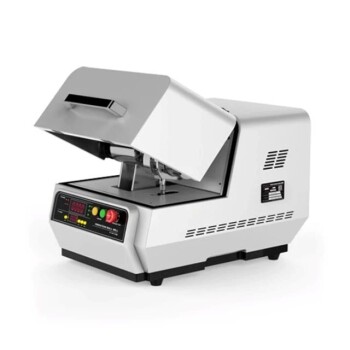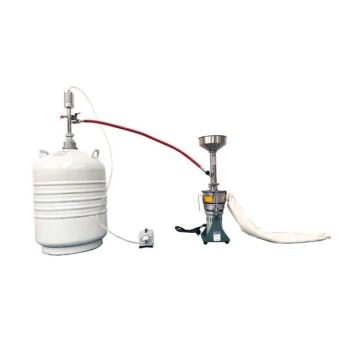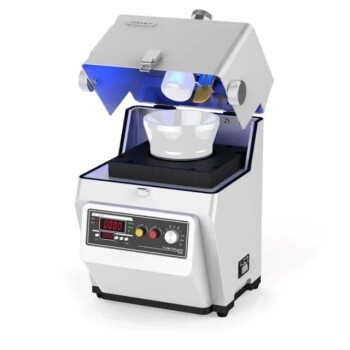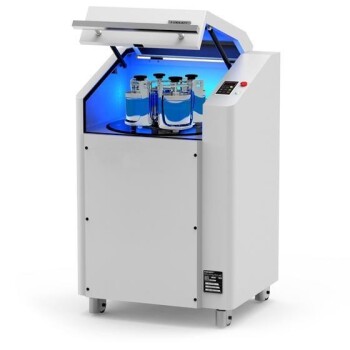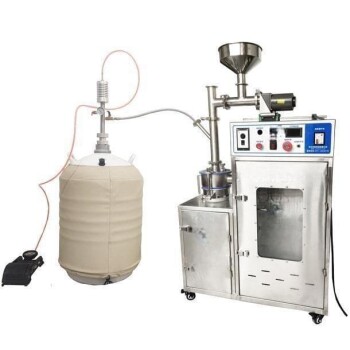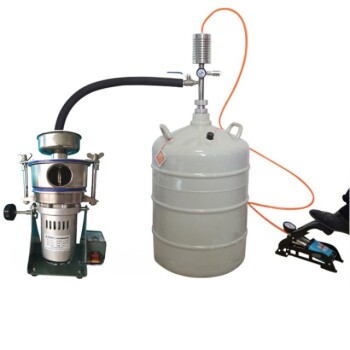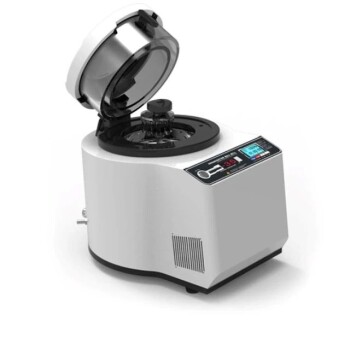Introduction to Frozen Tissue Crushers
Definition and Importance
Frozen tissue crushers are indispensable tools in laboratory settings, playing a pivotal role in grinding samples to prevent cross-contamination. Unlike traditional methods, these crushers are designed to handle large-scale processing efficiently, ensuring that the integrity of the samples is maintained throughout the grinding process. This capability is particularly crucial in fields such as biotechnology and pharmaceuticals, where sample purity is paramount.
The importance of frozen tissue crushers extends beyond mere efficiency. They are engineered to minimize the risk of contamination, which is a common challenge in traditional grinding methods. By employing advanced techniques and materials, these crushers offer a reliable solution to the often cumbersome and error-prone process of sample preparation. This not only enhances the accuracy of laboratory results but also streamlines the workflow, making it more manageable and less time-consuming.
Moreover, the versatility of frozen tissue crushers is noteworthy. They can be tailored to suit various types of samples, from soft tissues to hard bones, ensuring that the grinding process is optimized for each specific material. This adaptability is a key factor in their widespread adoption across different scientific disciplines.
In summary, frozen tissue crushers are not just tools but essential components in modern laboratory practices, bridging the gap between traditional methods and the need for precise, contamination-free sample processing. Their development and application continue to evolve, reflecting the growing demands of scientific research and the pursuit of higher standards in laboratory procedures.
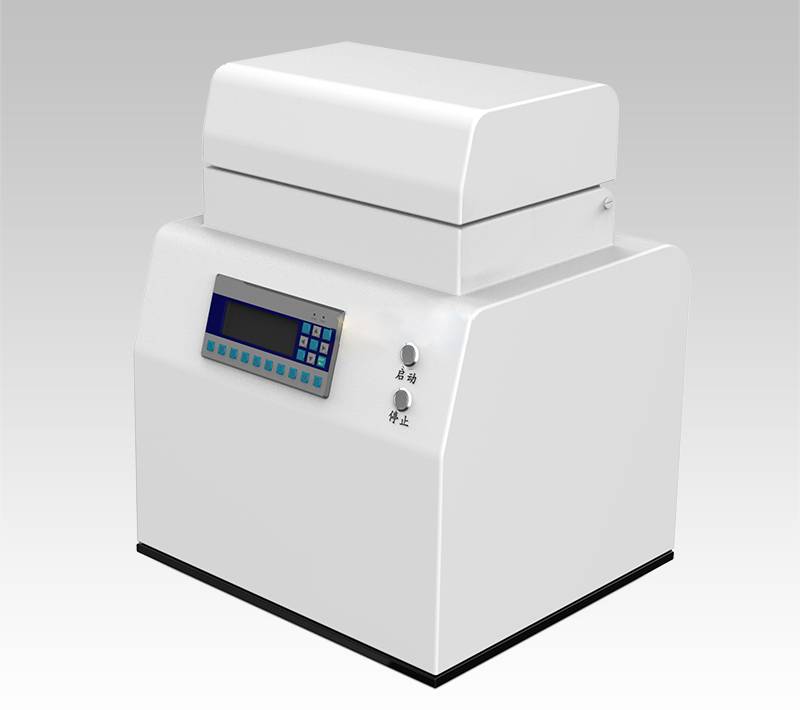
Choosing the Right Crusher
Selecting the appropriate frozen tissue crusher involves a multi-faceted approach, considering various operational parameters and material-specific requirements. The oscillation mode of the crusher plays a pivotal role in determining its efficiency and effectiveness. Crushers can oscillate in multiple dimensions—vertical, horizontal, or three-dimensional—each offering distinct advantages tailored to specific applications. For instance, vertical oscillation is ideal for delicate samples, while three-dimensional oscillation provides a more thorough grinding process suitable for robust materials.
The grinding method is another critical factor. Different types of crushers, such as planetary ball mills, mortar mills, knife mills, disk mills, and jaw crushers, cater to various grinding needs. Planetary ball mills are renowned for their high energy efficiency and fine grinding capabilities, making them suitable for research-grade applications. Conversely, knife mills are more practical for bulk sample processing due to their speed and simplicity.
Moreover, the specific requirements of the materials being processed cannot be overlooked. Materials with varying hardness, density, and chemical properties necessitate different grinding approaches. For example, soft tissues might require a gentle grinding method to avoid excessive degradation, whereas hard tissues benefit from more aggressive grinding techniques. Therefore, understanding the properties of the materials is essential to choosing a crusher that ensures optimal sample integrity and processing efficiency.
In summary, the selection of a frozen tissue crusher is a nuanced process that balances oscillation modes, grinding methods, and material-specific needs to achieve the best possible outcomes in laboratory sample preparation.
Historical Development
Early Innovations
The evolution of milling instruments for laboratory use began with the development of the first mortar-type milling instrument by Retsch in 1923. This pioneering innovation laid the groundwork for more sophisticated grinding technologies. In 1962, FRITSCH introduced the planetary ball mill, a significant advancement that revolutionized the precision and efficiency of milling processes. This innovation was quickly followed by the introduction of similar technologies by companies such as Tomy and MP in the subsequent years.
These early developments were pivotal in shaping the landscape of laboratory milling instruments. The introduction of planetary ball mills, for instance, allowed for more controlled and efficient grinding, which was particularly beneficial for handling delicate samples and ensuring minimal contamination. This era of innovation set the stage for further advancements in the field, driving the continuous improvement of milling technologies to meet the evolving needs of scientific research and industrial applications.
Domestic and International Trends
While imported frozen tissue crushers often come with a hefty price tag, domestic manufacturers have made significant strides in recent years. The quality and technological advancements of domestic crushers have rapidly improved, effectively closing the gap in operational details and enhancing user experience. This shift is particularly evident in the following areas:
-
Operational Efficiency: Domestic crushers now offer comparable operational efficiency to their international counterparts. Features such as precision control, automated processes, and user-friendly interfaces have become standard, ensuring that users can achieve the same level of performance without the need for extensive training or specialized knowledge.
-
Customization and Support: One of the key advantages of domestic options is the ability to tailor the crusher to specific needs. Manufacturers can offer customized solutions that address unique requirements, such as specialized oscillation modes or grinding methods. Additionally, local support and maintenance services are more readily available, reducing downtime and ensuring continuous operation.
-
Cost-Effectiveness: The initial investment and ongoing maintenance costs of domestic crushers are generally lower than those of imported models. This cost-effectiveness allows laboratories and research institutions to allocate their budgets more efficiently, without compromising on the quality or performance of their equipment.
-
Technological Integration: Domestic crushers now incorporate advanced technologies such as IoT connectivity, real-time monitoring, and data analytics. These features not only enhance the operational efficiency but also provide valuable insights into the grinding process, enabling users to optimize their workflows and achieve better results.
In summary, the rapid advancement of domestic frozen tissue crushers has made them a viable and attractive option for many laboratories and research institutions. By offering comparable performance, greater customization, and cost-effectiveness, these crushers are increasingly becoming the preferred choice for those looking to enhance their tissue grinding processes.
Classification and Principles
Oscillation Modes
Crushers exhibit a variety of oscillation modes, each tailored to specific applications and material properties. These modes can be broadly categorized into vertical, horizontal, and three-dimensional oscillating types, each offering distinct advantages.
- Vertical Oscillation: This mode is particularly effective for materials that require precise and controlled grinding. It ensures minimal material loss and is ideal for delicate samples where uniformity is crucial.
- Horizontal Oscillation: Best suited for bulk processing, this mode offers high throughput and is efficient for large volumes of material. It is often used in industries where speed and quantity are more critical than fine precision.
- Three-Dimensional Oscillation: This advanced mode combines the benefits of both vertical and horizontal oscillations, providing a more comprehensive grinding action. It is suitable for a wide range of materials, from soft to hard, and is particularly effective in achieving a homogeneous grind.
Each oscillation mode has its unique set of applications, making it essential to select the right crusher based on the specific requirements of the material being processed.
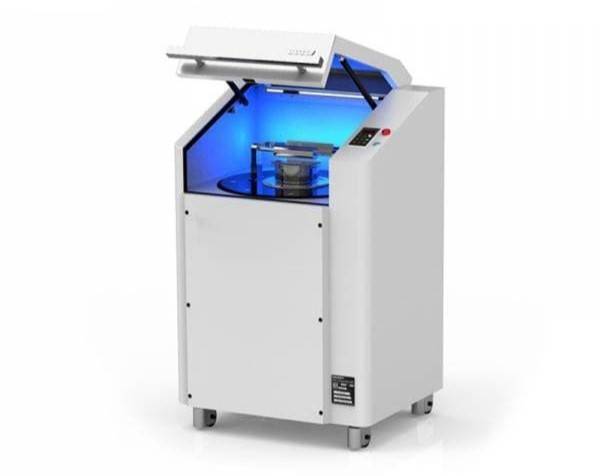
Grinding Methods
Grinding methods are crucial for the effective processing of frozen tissue samples, ensuring that they are finely ground without causing cross-contamination. The choice of grinding method depends on the specific requirements of the material being processed, the desired particle size, and the efficiency needed for the task.
Several common grinding methods are employed in the field, each with its unique advantages and applications. Planetary ball mills are known for their high energy efficiency and are particularly useful for materials that require a high degree of fineness. They operate by using centrifugal forces to accelerate the grinding balls, which in turn impact the sample, leading to a fine and uniform particle size.
Mortar mills are another popular choice, especially for materials that require a gentle grinding process. These mills use a mortar and pestle mechanism to crush the sample, which is ideal for delicate materials that could be damaged by more aggressive methods.
For materials that require a more aggressive approach, knife mills and disk mills are often employed. Knife mills use sharp blades to cut the material into smaller pieces, while disk mills use rotating disks to grind the sample. Both methods are effective for hard and fibrous materials.
Lastly, jaw crushers are used for the initial crushing of large samples. They are particularly useful for reducing the size of materials before further processing, such as in a ball mill or mortar mill.
In summary, the selection of the appropriate grinding method is essential for achieving the desired outcome in tissue processing. Each method has its strengths and is suited to different types of materials and processing needs.
Grinding Ball Selection
Material Considerations
The selection of grinding ball material is a critical factor that significantly influences both the efficiency of the crushing process and the longevity of the equipment. Each material offers unique properties that can either enhance or hinder the grinding performance, depending on the specific requirements of the tissue samples being processed.
Common materials for grinding balls include:
-
Stainless Steel: Known for its durability and resistance to corrosion, stainless steel balls are versatile and can handle a wide range of tissue types. However, they may introduce metal contamination, which is a concern in some sensitive applications.
-
Aluminum Oxide: These balls are exceptionally hard and resistant to wear, making them ideal for high-impact grinding. They are also non-reactive, reducing the risk of contamination. However, their high cost can be a limiting factor.
-
Agate: Agate balls offer excellent hardness and a low coefficient of friction, ensuring efficient grinding with minimal sample loss. They are particularly suitable for delicate samples where contamination must be minimized.
-
Carbide: Carbide balls are extremely durable and can withstand high-pressure grinding environments. They are often used in applications requiring high precision and where the hardness of the tissue samples is significant.

| Material | Advantages | Disadvantages |
|---|---|---|
| Stainless Steel | Durable, corrosion-resistant, versatile | Potential metal contamination |
| Aluminum Oxide | Hard, wear-resistant, non-reactive | High cost |
| Agate | Hard, low friction, minimal sample loss | Brittle, can chip under extreme conditions |
| Carbide | Extremely durable, high-pressure environments | Expensive, can be too hard for some applications |
The choice of material should be guided by the specific needs of the tissue samples, the desired grinding efficiency, and the tolerance for potential contamination. Each material has its own set of benefits and drawbacks, making the selection process crucial for optimizing both the crushing effect and the equipment's lifespan.
Diameter and Number of Balls
The diameter and number of grinding balls are critical parameters that significantly influence the crushing effect and overall production efficiency. These parameters must be meticulously chosen based on the specific properties of the materials being processed and the desired outcomes.
To illustrate, consider the following table that outlines the typical impacts of different ball diameters and quantities:
| Ball Diameter (mm) | Number of Balls | Crushing Effect | Production Efficiency |
|---|---|---|---|
| 10 | 100 | Moderate | High |
| 20 | 50 | High | Moderate |
| 30 | 25 | Very High | Low |
Larger balls generally provide a more intense crushing effect due to their greater mass and kinetic energy, but they can reduce the overall grinding efficiency by occupying more volume within the mill. Conversely, smaller balls offer higher efficiency by increasing the number of impacts per unit time, but they may not deliver the same level of crushing force as larger balls.
Therefore, the optimal combination of ball diameter and number should be determined through careful experimentation and consideration of the material's hardness, fragility, and the required fineness of the final product. This balance ensures that the grinding process is both effective and efficient, meeting the specific requirements of the laboratory or industrial application.
Choosing the Right Crusher
Comparing Vibratory and Planetary Ball Mills
When it comes to grinding frozen tissue samples, two prominent types of mills often come into consideration: vibratory ball mills and planetary ball mills. Both have their unique characteristics and operational efficiencies, but they differ significantly in terms of energy utilization and grinding outcomes.
Vibratory ball mills are known for their ability to generate a high amount of grinding energy in a short period. The rapid oscillation of the grinding balls within the mill chamber allows for quick and efficient processing of materials. This efficiency is particularly advantageous when dealing with large volumes of samples or when time is a critical factor. Despite their speed, the grinding effect produced by vibratory ball mills is often comparable to that of planetary ball mills, making them a viable option for many laboratory applications.
On the other hand, planetary ball mills offer a more controlled and nuanced grinding process. These mills operate on the principle of planetary motion, where the grinding balls move in a complex, high-energy trajectory. This results in a more uniform and thorough grinding effect, which is particularly beneficial for delicate or sensitive materials. While planetary ball mills may require more time to achieve the desired grinding outcome, the quality of the end product is often superior due to the precise control over the grinding process.
| Feature | Vibratory Ball Mills | Planetary Ball Mills |
|---|---|---|
| Grinding Energy | High | Controlled |
| Time Efficiency | High | Moderate |
| Grinding Effect | Comparable | Superior |
| Application Suitability | Bulk processing | Delicate materials |
In summary, while vibratory ball mills excel in speed and energy efficiency, planetary ball mills offer a more refined and controlled grinding process, making them ideal for materials that require a higher level of precision. The choice between these two types of mills ultimately depends on the specific requirements of the laboratory and the nature of the materials being processed.
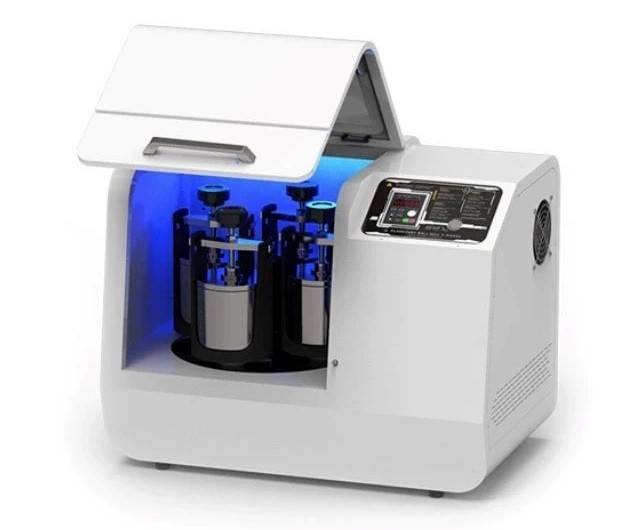
Operational Considerations
When selecting a frozen tissue crusher, understanding the operational nuances specific to each brand is essential. These differences can significantly impact the efficiency and effectiveness of the grinding process. For instance, the oscillation mode, whether vertical, horizontal, or three-dimensional, can dictate the type of sample preparation best suited for your needs. Similarly, the grinding method, which could range from planetary ball mills to mortar mills, will influence the final particle size and homogeneity of the sample.
To ensure the best fit for your specific requirements, it is advisable to not only read customer reviews but also conduct personal trials. Reviews can provide insights into the user experience, durability, and overall performance of the crusher. However, personal trials allow you to assess the equipment's suitability firsthand, ensuring that it meets the unique demands of your laboratory or research setting. This hands-on approach helps in validating the claims made by manufacturers and ensures that the chosen crusher aligns with your operational goals and sample processing needs.
Related Products
- Laboratory Micro Tissue Grinding Mill Grinder
- Disc Cup Vibrating Mill Multi-Platform for Lab
- Lab Vibration Mill
- High Energy Planetary Ball Mill Milling Machine for Laboratory
- High Energy Vibratory Ball Mill for Lab Use
Related Articles
- Application of Ultra-Micro Pulverization Technology in the Food Industry
- Key Features of the Micro Tissue Grinder: Usage, Advantages, and Applications
- The Three Stages of Lab Crushing: A Comprehensive Guide
- What is a Laboratory Crusher Used For?
- Understanding the Dry Bag Cold Isostatic Press Machine by KinTek

